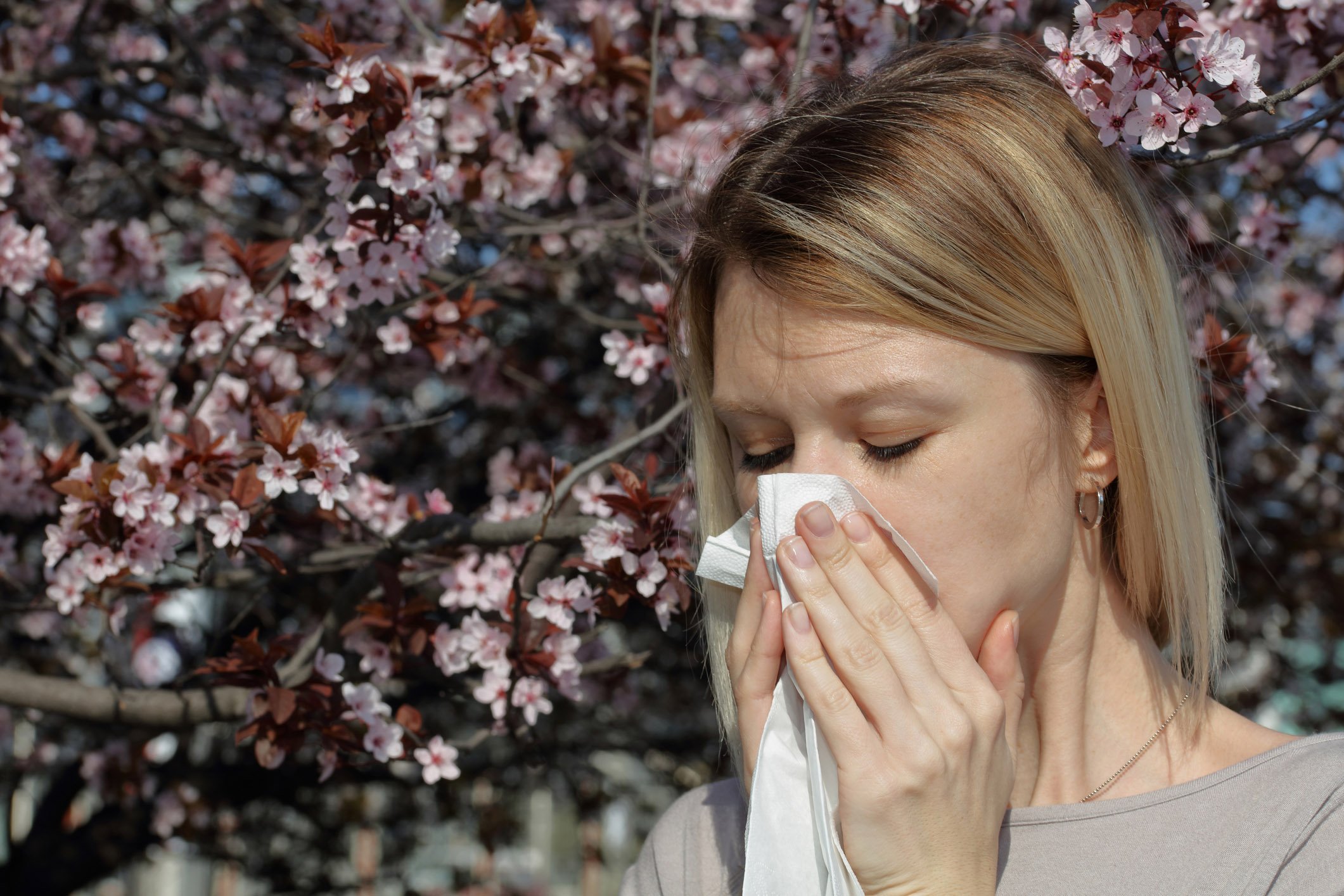Spring has arrived and the first 'pollen bomb' of the year is set to hit any day now with millions of residents in the U.K. expected to be affected, with, according to a new study, the West Midlands being the worst.
Research conducted by Two Wombats measured the average pollen count across spring for seasoned pollens along with the number of high-risk days and air quality for the next 3 months in each region. If you are reading this in the West Midlands, you might already have itchy eyes and a streaming nose.
That's because the region is one of the worst places to be if you're allergic to pollen. West Midlands has the highest pollen count in the country with a total pollen integral of 26,701 and an average daily pollen count of 201.89.
The region also has the highest number of risk days, (103) with oak trees being the biggest pollen producers which are expected to hit their highest rates from 27th of April to the 14th of June. Residents are advised to take extra care throughout this period.
In second place is the Southeast England with a total pollen integral of 24,596 and an average daily pollen count of 202.50 which is one of the highest in the country. Allergy sufferers on this region are recommended to stay indoors this April as birch trees will be at their highest activity levels until early May.
Next is East England, this region has several woodlands and forests, especially in areas like Norfolk, Suffolk, and Cambridgeshire, which greatly help pollen production. Pollen levels will be painfully high from April 7th to May 5th, and caution is advised.
In total, East of England has a total pollen integral of 17,686 and an average daily pollen count of 123.27. Being one of the regions with the worst air quality does not favour those with allergies, as pollution from diesel fumes only strengthens allergens and puts citizens at greater risk.
South Central England ranked fourth with a pollen integral of 17,212. The region is characterised by extensive woodlands, parks, and grassy areas, where Oaks seem to thrive.
These trees are the most significant pollen producers in the area, and April 24th to June 6th are the most dangerous days for allergy sufferers. Ranking fifth is East Midlands with a total count of 18,435 and an average daily count of 131.88.
Birch Trees produce the most pollen in the region and residents should start getting prepared, as high pollen levels will continue from early April until May 8th. In sixth spot is Wales, with a pollen count of 101,04 and average daily count of 79.82.
Ash trees are the biggest pollen producers in the region, these trees have already hit their highest pollen producing rates and will continue until the end of April. Certain tree and grass species known for their high pollen producer rates may be less prevalent in Wales compared to other parts of the U.K., which creates a partially better environment for allergy sufferers.
Southwest England follows seventh on the list. This region will experience 42 high risk days, but residents should be especially cautious during the entire month of April, when Ash trees produce the most pollen in the region.
While this region holds very diverse plant species it may experience lower pollen levels due to the influence of its maritime climates and sea breezes. Northwest England is eighth on the list.
April 10th to May 4th marks the most dangerous period for allergy sufferers on the region. While it has a relatively higher average daily pollen catch than other regions, 104.8, this region has better air quality than others.
This region is expecting rainfall this weekend, which will help in washing away pollen particles from the air and making it easier for citizens to leave their homes. Northeast England is one of the best choices for allergy sufferers.
This region’s industrial centres and activity can lead to elevated pollen levels, but its weather conditions make for wet winters and relatively cool summers, which help in reducing pollen levels. Higher pollen counts can be expected in the region from April 9th to May 11th.
Those looking for relief should consider Northern Ireland, as it offers one of the lowest pollen levels in the country mixed with the best air quality, scoring 8.51. Northern Ireland's coastal regions benefit from the sea, as coastal breezes can help disperse pollen and reduce pollen concentrations in coastal areas, contributing to lower pollen levels compared to inland regions.
While safer than other regions, Northern Ireland will also experience a more dangerous period from April 9th to May 11th. Scotland is the most pollen-proof area in the U.K., with the lowest average pollen catch per day in the country, 33.53, and the lowest high-risk days, 19.
Birch trees in Scotland are expected to produce the most pollen from April 13th to May 16th. Scotland's cooler climate and frequent rainfall limit the growth of pollen-producing plants, making it a safer place for people vulnerable to allergens.
Here is the full list of pollen hotspots in the U.K.:
|
Rank |
Area |
Pollen Integral |
Average Pollen per Day |
High Risk Days |
Air Quality |
Total Score |
Most Common Pollen Type |
|
|
1 |
West Midlands |
26701 |
201.89 |
103 |
36 |
8.97 |
Oak |
|
|
2 |
Southeast England |
24596 |
202.50 |
90 |
40.7 |
8.51 |
Birch |
|
|
3 |
East of England |
17686 |
123.27 |
78 |
52 |
6.82 |
Birch |
|
|
4 |
South Central England |
17212 |
112.82 |
80 |
37.4 |
5.79 |
Oak |
|
|
5 |
East Midlands |
18435 |
131.88 |
84 |
31.8 |
5.69 |
Birch |
|
|
6 |
Wales |
10104 |
79.82 |
42 |
40.6 |
5.46 |
Ash |
|
|
7 |
Southwest England |
8943 |
60.63 |
43 |
41.4 |
3.88 |
Ash |
|
|
8 |
Northwest England |
16069 |
104.08 |
68 |
23 |
3.82 |
Birch |
|
|
9 |
Northeast England |
3976 |
59.92 |
46 |
28.6 |
2.30 |
Birch |
|
|
10 |
Northern Ireland |
7643 |
43.31 |
28 |
20.8 |
1.56 |
Ash |
|
|
11 |
Scotland |
5293 |
33.53 |
19 |
21.2 |
1.55 |
Birch |
Cormac Folan, founder of Two Wombats commented on the findings: ‘’As climate change keeps worsening, we have been experiencing milder winters and drier summers, these factors make for a much more favourable environment for plants to produce pollen.
“Southeast England and the West Midlands clearly have it worst, coincidentally these are some of the most populated regions in the U.K., which calls for an increased effort towards making pollen-related data more accessible to citizens and help prevent health complications. Pollen is at its highest count during warmer and drier days, it is recommended for those most vulnerable to try and keep outdoor activities to their lowest.”











